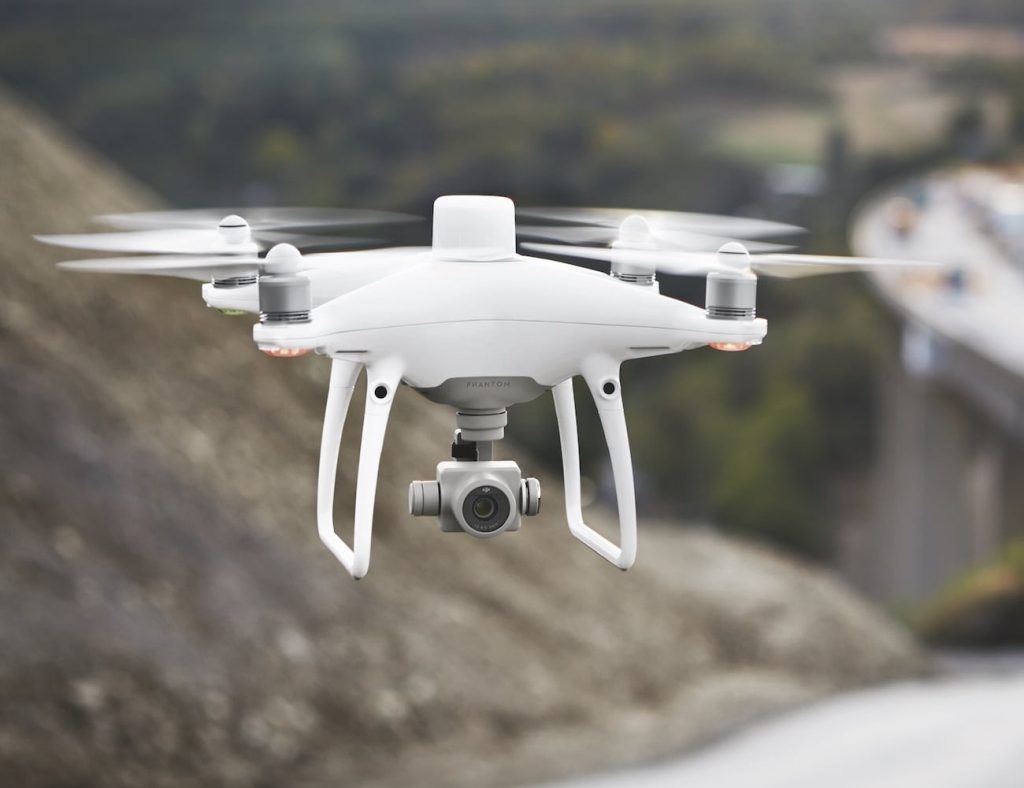Using the correct equipment is critical to the success of any project. UAV projects are no different, knowing how to select the best tool for each specific application is fundamental to efficient data collection. We use both multi-rotor and fixed wing UAV equipment, depending on project goals and constraints. Below are some considerations for selecting appropriate UAV equipment.
Multi-Rotor UAV Equipment:
First let’s take a look at the most common type of UAV, the multi-rotor. Also known as quadcopter, hexacopter, and octocopter, these multi-rotor drones have four, six, or eight props respectively. Multi-rotor flight characteristics are similar to that of helicopters, which enable hovering, sharp turns, rapid change in aircraft speed, direction, and altitude, including active braking and obstacle avoidance.
With the ability to take off from just about anywhere, including being launched by hand, multi-rotor drones have a huge advantage when space is limited. Sometimes we need to take off from a boat, in a small clearing, or from the roof of a building, and in these situations multi-rotors are often the only option. Other advantages of multi-rotor drones include higher payload capacity which allows the use of a wider range of sensors; more power to maintain stability in windy conditions; and the ability to stop, turn around, and hover in place. All of these capabilities come at a cost, as power consumption is tremendous, requiring multiple batteries per mission.
Although the benefits of multi-rotor UAVs are numerous, there are several drawbacks. Most notably flight time; multi-rotors require a lot of power to maintain lift. An average professional multi-rotor UAV has flight times ranging from twenty to forty minutes. Another major drawback of multi-rotors is their complexity. If one motor fails, a quadcopter will fall from the sky causing loss or damage to expensive equipment. Multi-rotors are very likely to destroy themselves during a crash. Finally, multi-rotor drones are noisy and more dangerous than fixed wings; multiple exposed props spinning at very high speeds can cause serious injury, and loud buzzing could disturb sensitive environments or draw unwanted attention to the aircraft.
Fixed Wing UAV Equipment:
Fixed wing UAVs typically have one or two props, and rely on their wings to provide lift. These drones take off, land, and fly much like conventional planes with smooth, bird-like flight characteristics. Fixed-wing UAVs cannot hover or make sharp turns, but what they lack in maneuverability, they make up for in endurance.
Being able to fly for over an hour without landing is the greatest advantage of fixed wing platforms. Many fixed wing drones can map one square mile on a single battery. To map that same area with a multi-rotor would take five or more batteries; returning to its home point each time, burning precious flight time. Most fixed wing UAVs are much lighter than multi-rotors and the props are usually shielded by the fuselage, making them less dangerous in the event of a collision. Because of this, fixed wings are less complicated and tend not to destroy themselves in a crash. Having fewer props turning at lower speeds allows fixed wing drones to be nearly silent, compared to buzzing multi-rotors. Having wings to provide lift rather than props allows fixed-wings to glide gently to the surface in the event of power loss which greatly reduces the risk of equipment or property damage. Fixed wing drones are ideal for mapping large areas quickly, but the same qualities that provide great endurance also limit where and how they can operate.
Take-off and landing distance is the main drawback of fixed wing aircraft. Launching a fixed wing requires a large open area to allow space for the drone to ascend to flight altitude; sometimes adequate clearings simply do not exist near a project area. Another drawback is that fixed wing UAVs cannot hover in place or make sharp turns, which makes them very inefficient for vertical asset inspection. Additionally, most fixed wings are designed for commercial use, meaning skills acquired flying consumer-grade multi-rotors will not apply. Fixed wings require additional training to learn and maintain the equipment.
Hybrid Vertical Take-Off and Landing(VTOL) UAVs:
Hybrid VTOL UAVs are a newer platform becoming popular in certain industries due to their unique capabilities. Hybrid UAVs attempt to combine the best of both multi-rotor and fixed wing UAVs. Essentially a fixed wing drone that can take off and land vertically, hybrids can launch from nearly anywhere that a multi-rotor can.
Vertical take-off is the greatest advantage of hybrid UAVs, but they also boast longer flight times than multi-rotor drones, with typical flight times ranging from forty minutes to one hour. While vertical launch and additional flight time are great, there are some disadvantages. Hybrids are not well suited for launching/catching by hand, and they cannot hover or maneuver in the same way a multi-rotor can, meaning they are not ideal for vertical asset inspections. Additionally, hybrids tend to have less payload capacity than multi-rotors, which limits their capability. Hybrids are a compromise, not as versatile as multi-rotors, but they have better flight times; minimal space is needed for take-off, but flight endurance is less than a conventional fixed wing.

Knowing how to choose the right tool for each project is critical to successful data capture and ultimately a quality output. Project requirements and constraints dictate which equipment we select to complete each mission, and sometimes that means using multiple platforms. There is no “one size fits all” solution, but with the knowledge gained from reading this article, you will be better prepared to make the best choice for your next project.






